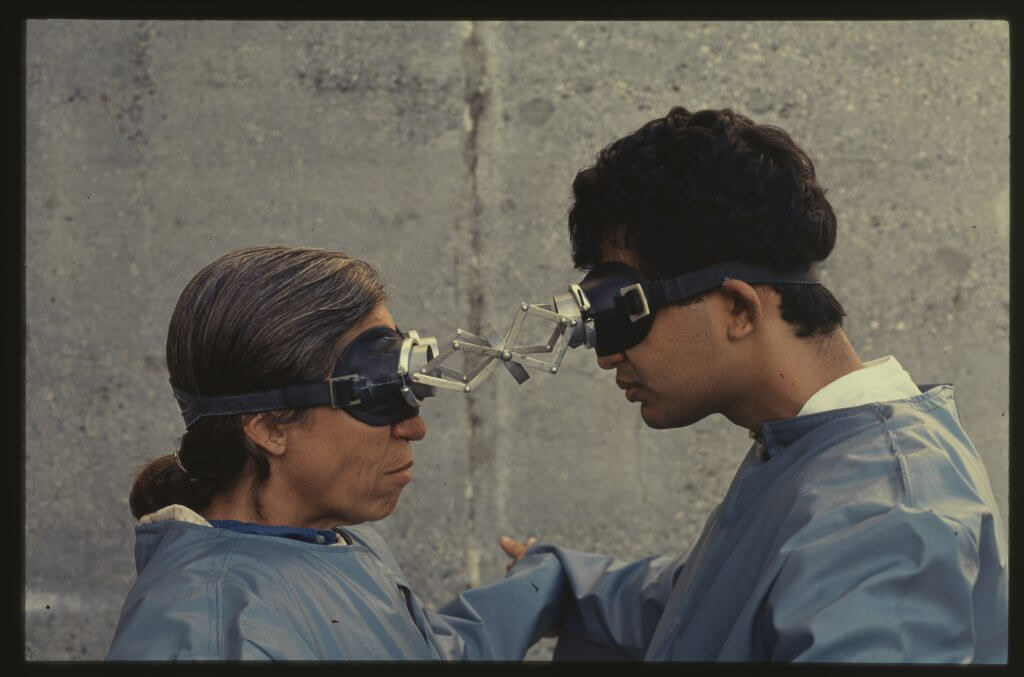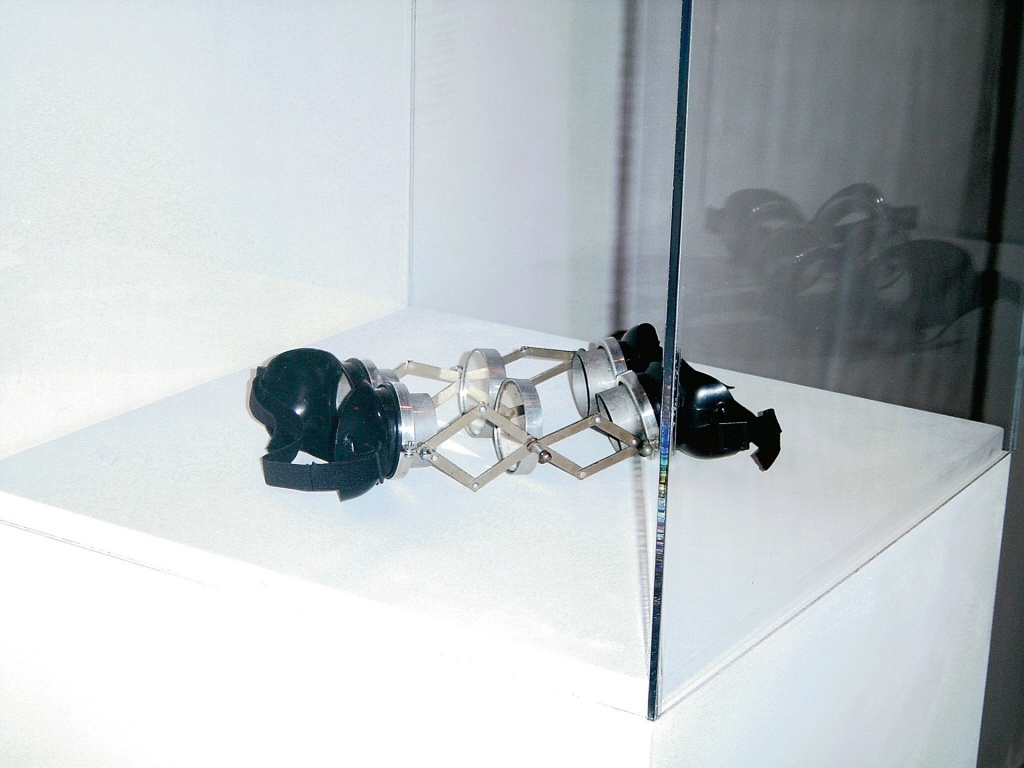The Brazilian Artist Forcing Us to Look Into Each Other’s Eyes
By Keshav AnandA pioneer of “objetos relacionais” – “relational objects” in English – Brazilian artist Lygia Clark’s interactive sculptures blur the lines between art and body, recasting the viewer as participant. Born in 1920 in Belo Horizonte, a city surrounded by mountains in southeastern Brazil, Clark, formally trained in painting, became closely associated with the Brazilian Constructivist movement early in her career.
But by the late 1950s and early 60s, she turned to experiential art. Her practice evolved in tandem with the political upheavals and cultural shifts of mid-20th century Brazil. Along with Brazilian artists Amilcar de Castro, Franz Weissmann, Lygia Pape and poet Ferreira Gullar, Clark co-founded the Neo-Concrete movement. This group collectively sought to liberate art from rationalist constraints, emphasising the role of emotion, intuition, and sensuality in their work.
Created in 1966, Clark’s Diálogo de Óculos (Glasses Dialogue) exemplifies this direction. In this piece, two participants don a pair of interlinked goggles that force them to look directly into each other’s magnified eyes, eliminating peripheral vision and personal space.

In conversation with Brazilian poet and art critic Vera Pedrosa in 1968, Clark shared: “At present, the focus of my work is primarily the experience. I propose that the spectator should discover the meaning of his activity. Basically, the object as such is no longer important; it is the experience, the sensations the object provides; it is the act that matters.”
Rather than a static sculpture, Diálogo de Óculos functions as a wearable device that can activate interpersonal connection. For Clark, the physical constraint this “objetos relacionais” imposes becomes a psychological prompt, encouraging an intimate – and potentially uncomfortable – confrontation with another human being. Through an intense mutual gaze, the work challenges conventional notions of spectatorship, as well as communication.

“The goggles, as the object, remind me of WW1 gasmasks or military goggles – the metal arms are jarring and mechanical, and the rubber eye pads are like heavy black shells. The large shape of the goggles obscure the human face like a mask, so that some parts are completely hidden beneath the rubber frames and the eyes are only visible to the other participant,” observes writer and researcher Evie Ward in The Courtauld’s Documenting Fashion.
Part of Clark’s larger series of works, “Nostalgia of the Body,” Diálogo de Óculos sits among a number of “propositions” that aim to reconnect individuals with their own physicality and with others. Often making reference to psychoanalytical sources and healing practices in her writings, the artist saw her interactive creations as therapeutic – a way to explore the unconscious and to restore lost connections between mind, body and society.
Feature image: Lygia Clark, Diálogo de Óculos (Glasses Dialogue), 1966. Photo: Eduardo Clark. Courtesy Associação Cultural O Mundo de Lygia Clark